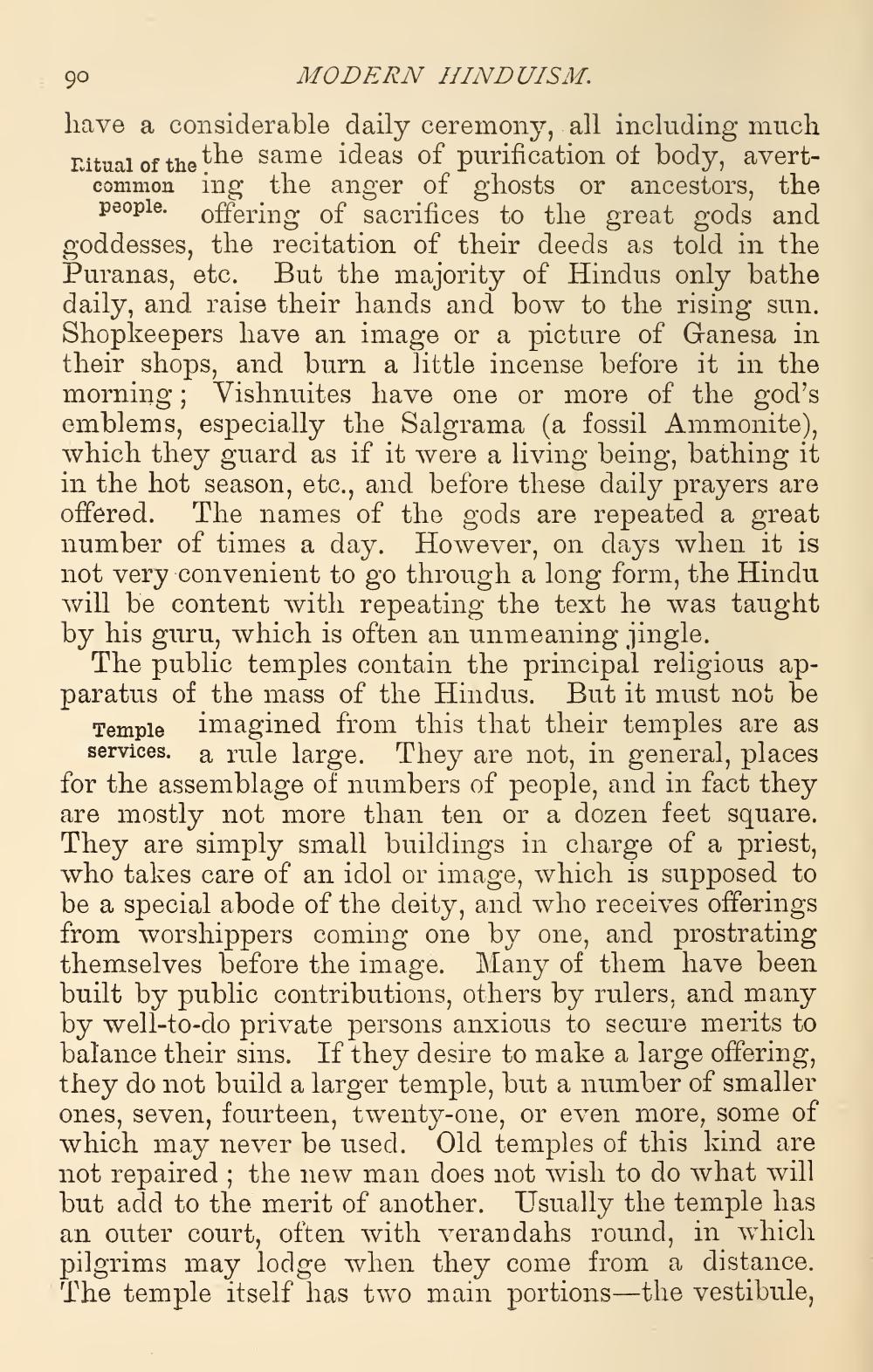________________
90
MODERN HINDUISM.
Ritual of the
have a considerable daily ceremony, all including much the same ideas of purification of body, avertcommon ing the anger of ghosts or ancestors, the people. offering of sacrifices to the great gods and goddesses, the recitation of their deeds as told in the Puranas, etc. But the majority of Hindus only bathe daily, and raise their hands and bow to the rising sun. Shopkeepers have an image or a picture of Ganesa in their shops, and burn a little incense before it in the morning; Vishnuites have one or more of the god's emblems, especially the Salgrama (a fossil Ammonite), which they guard as if it were a living being, bathing it in the hot season, etc., and before these daily prayers are offered. The names of the gods are repeated a great number of times a day. However, on days when it is not very convenient to go through a long form, the Hindu will be content with repeating the text he was taught by his guru, which is often an unmeaning jingle.
The public temples contain the principal religious apparatus of the mass of the Hindus. But it must not be
Temple imagined from this that their temples are as services. a rule large. They are not, in general, places for the assemblage of numbers of people, and in fact they are mostly not more than ten or a dozen feet square. They are simply small buildings in charge of a priest, who takes care of an idol or image, which is supposed to be a special abode of the deity, and who receives offerings from worshippers coming one by one, and prostrating themselves before the image. Many of them have been built by public contributions, others by rulers, and many by well-to-do private persons anxious to secure merits to balance their sins. If they desire to make a large offering, they do not build a larger temple, but a number of smaller ones, seven, fourteen, twenty-one, or even more, some of which may never be used. Old temples of this kind are not repaired; the new man does not wish to do what will but add to the merit of another. Usually the temple has an outer court, often with verandahs round, in which pilgrims may lodge when they come from a distance. The temple itself has two main portions-the vestibule,




